I can totally relate to feeling a little bit stumped when it comes to figuring out where next to take your hiking boots – should you aim for the awe-inspiring vistas of national parks or explore hidden gems on local trails? Trust me, I too have wrestled with this delightful dilemma.
After weaving in and out through numerous trails, pouring hours into researching destinations, and plenty of foot blisters as badges of honor, I offer you a comprehensive guide packed with nine essential tips that will help you navigate both terrains like a pro.
From planning must-haves to trail etiquette secrets – my insights are sure to elevate your hiking escapades from simply enjoyable ones to truly unforgettable experiences!
Key Takeaways
- Hiking locally supports the community, offers easy access and convenience, and allows you to explore lesser-known landscapes.
- National parks offer breathtaking scenery, well-maintained trails, and opportunities to spot wildlife.
- To find spectacular local trails, research online resources and apps, ask for recommendations from local outdoor enthusiasts, explore nearby state and regional parks, or join local hiking groups and clubs.
- When deciding between national parks and local trails, consider factors like scenery, accessibility, amenities, support for the community. Plan ahead and follow Leave No Trace principles for a safe hiking experience.
Why Hiking Locally is Valuable
Hiking locally is valuable for several reasons, including supporting local trails and communities, enjoying easy access and convenience, as well as exploring lesser-known landscapes.
Supporting local trails and communities
I love hiking on local trails. It gives me a chance to help my community in a fun way. When we use and care for local trails, it helps keep them in good shape. Many small businesses near the trails make money from hikers like us.
They sell food, gear, and other things that hikers need. This is good for our area’s economy. Plus, when we spend time on these less-known paths, we can find some real hidden gems right here at home! Not only do I enjoy this great outdoor fun, but I also meet new friends who love hiking too! By supporting the local trails and communities around us, we’re helping everyone benefit from all this natural beauty!
Easy access and convenience
Living near trails makes hiking easier. With local nature walks, there’s no need for long drives or crowded parks. I just step outside and start my adventure. They’re great for all hikers, both new and old! Easy access to outdoor parks comes with another big plus: more time to hike!
Local trails are also very handy. They offer a quick getaway into the wild without leaving town. This means I can enjoy a short hike even on busy days when there isn’t much free time left after work or school.
It’s not just about saving time though; convenient outdoor recreation helps me stay active regularly too! Every chance to enjoy the scenic exploration opportunities keeps me in love with hiking day in, day out.
Exploring lesser-known landscapes
Local trails let you uncover hidden gems. They may not be famous, but they have their own charm. I have hiked in New Mexico’s public lands and found peace away from the crowds. In these spots, nature is raw and untouched.
You can feel a close tie with the local environment. The health benefits of hiking also kick in without delay. Each step brings a new surprise, each turn reveals unexpected beauty.
It’s different from national parks, but it stirs up the same love for outdoor recreation and holds its own magic just waiting to be discovered.
Advantages of Hiking in National Parks
National parks offer breathtaking scenery, well-maintained trails, and the chance to spot a wide variety of wildlife.
Spectacular scenery and iconic landmarks
Hiking in national parks offers the chance to experience breathtaking scenery and see famous landmarks that are known around the world. Imagine standing in awe of the majestic waterfalls in Yosemite National Park or gazing at the towering cliffs of Zion National Park.
These natural attractions provide stunning views that will leave you speechless. Not only do national parks offer incredible landscapes, but they also allow you to connect with nature on a deeper level.
You can witness wildlife encounters up close, whether it’s spotting bears in Yellowstone or observing elk in Rocky Mountain National Park. The beauty and grandeur of these iconic destinations make for unforgettable hikes that will stay with you long after your adventure is over.
Well-maintained trails and amenities
National parks offer well-maintained trails and great amenities for hikers like me. These trails are carefully managed to ensure our safety and enjoyment. They have clear markers and guides, making it easy for us to navigate and explore.
The pathways are designed to be eco-friendly, so they minimize any harm to the natural habitat. And if we need any help or information, there are visitor centers with knowledgeable staff who can provide guidance and educational resources.
It’s really wonderful to hike in national parks where everything is taken care of so well!
Opportunities for wildlife spotting
Hiking in national parks is a great way to spot wildlife and get up close to nature. National parks offer diverse habitats and ecosystems, which means you have a higher chance of encountering different species while hiking.
It’s not uncommon to see animals like deer, birds, or even larger mammals like bears or elk. Some national parks even have designated wildlife viewing areas or trails, making it easier for hikers to spot these incredible creatures.
Plus, when you hike in national parks, you might also have the opportunity to see rare or endangered species that are protected within the park boundaries. So get your binoculars ready and keep an eye out for some amazing wildlife on your next hiking adventure!
How to Find Spectacular Local Trails
There are several ways to find spectacular local trails near you. From researching online resources and apps to asking for recommendations from local outdoor enthusiasts, this section will guide you in discovering hidden gems in your own backyard.
Don’t miss out!
Researching online resources and apps
To find spectacular local trails, I love using online resources and apps. They make it easy to discover hiking spots near me that are related to hiking in national parks. I can search for specific keywords like “local hiking trails” or “hiking in national parks” to narrow down my options.
Online hiking resources provide detailed trail descriptions, difficulty levels, and user reviews to help me choose the perfect hike. Mobile hiking apps are also handy because they can track my location and show nearby trails on a map.
Some apps even offer offline maps, so I don’t need an internet connection while on the trail. These tools have made it so much easier for me to explore new places and plan my outdoor adventures!
Asking for recommendations from local outdoor enthusiasts
When it comes to finding the best trails in your area, asking for recommendations from local outdoor enthusiasts can be incredibly valuable. These experienced hikers have insider knowledge about the most scenic trails and hidden gems that may not be widely known.
By seeking their advice, you can discover new hiking spots that offer breathtaking views and unique experiences.
In addition to getting recommendations, local outdoor enthusiasts can also provide valuable tips and insights about specific trails. They can advise you on the difficulty level, terrain conditions, and any potential hazards to look out for.
This information is especially helpful if you’re a beginner or looking for family-friendly trails.
To connect with these knowledgeable individuals, consider joining local hiking and walking communities or participating in organized hikes led by experienced guides. You can also explore online forums or social media groups dedicated to hiking in your region.
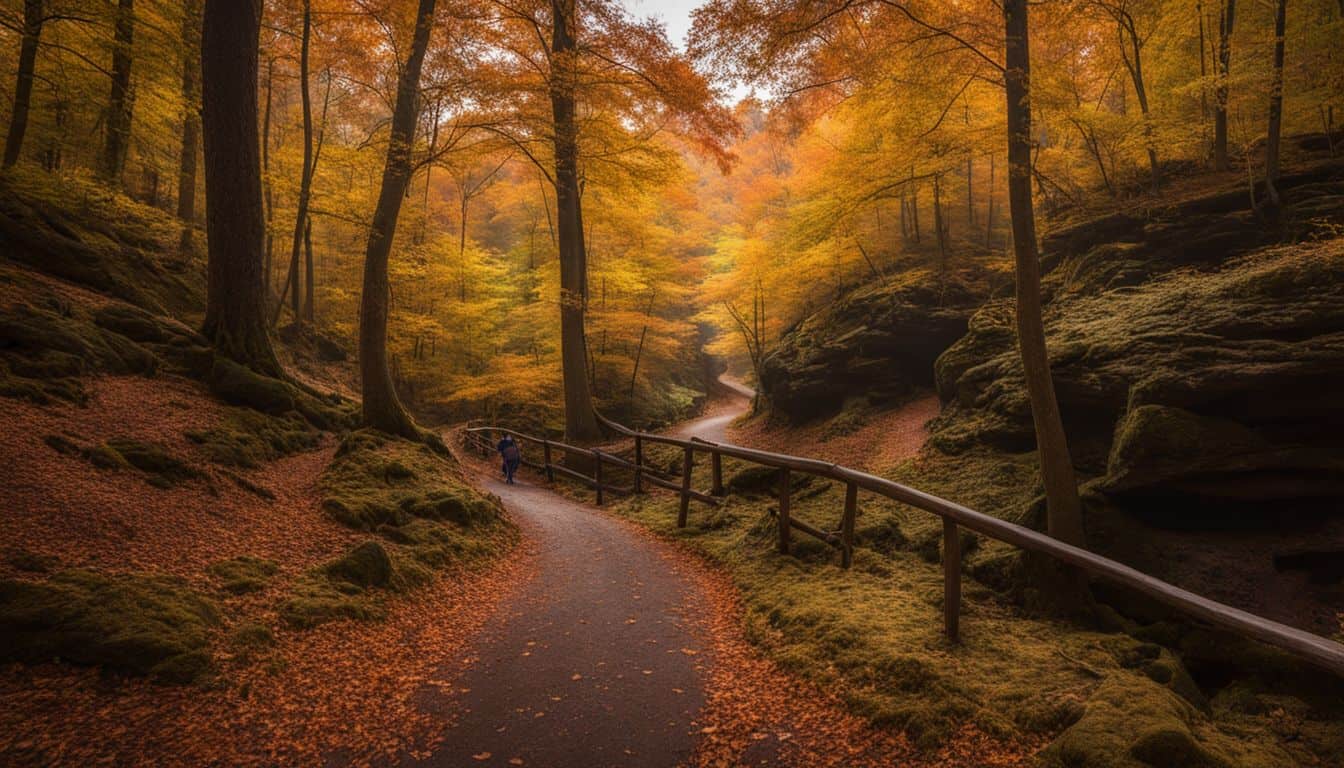
Exploring nearby state and regional parks
I love exploring nearby state and regional parks when I want to find spectacular local trails. In New York, there are 180 state parks and 35 historic sites to discover. If you’re looking for a unique experience, Redwood National and State Parks have breathtaking hiking and biking trails among the towering redwoods.
Sky Meadows State Park in Virginia offers access to the Appalachian Trail, as well as bridle trails, hiking trails, and bike trails. Pikes Peak State Park in Iowa is known for its scenic bluffs and valleys along its 11 miles of trails.
And if you enjoy shoreline hiking, Whitewater Memorial State Park provides that opportunity along with camping, fishing, boating, and swimming options. These nearby state and regional parks offer a chance to explore beautiful landscapes close to home while supporting local conservation efforts.
Joining local hiking groups and clubs
I love hiking, and one of the best decisions I made was joining a local hiking group. It has been an incredible experience connecting with other outdoor enthusiasts who share my passion for nature and adventure.
Being part of a hiking community has provided me with encouragement and support for my hiking adventures. Not only do I get to meet like-minded individuals, but I also learn from experienced hikers who have valuable knowledge and tips on finding spectacular local trails and navigating national parks.
Plus, being in a group enhances my overall hiking experience by offering a sense of accomplishment and motivation to explore new trails. If you don’t know any hikers, don’t worry! You can find hiking clubs in many cities and towns that regularly plan outings.
A Comprehensive Guide: Hiking in National Parks vs Local Trails
When deciding whether to hike in national parks or local trails, there are a few factors to consider. National parks offer stunning scenery and iconic landmarks that can’t be found anywhere else.
The trails are well-maintained and often have amenities like restrooms and picnic areas. You also have the chance to spot wildlife while hiking in national parks.
On the other hand, local trails have their own unique charm. They allow you to support your community and explore lesser-known landscapes that may surprise you with their beauty. Local trails are usually more easily accessible and convenient for quick hikes close to home.
To find spectacular local trails, you can do some online research or use apps dedicated to outdoor exploration. Asking for recommendations from local outdoor enthusiasts is another great way to discover hidden gems nearby.
State and regional parks often have excellent hiking options as well. Consider joining local hiking groups or clubs where you can meet like-minded individuals who share their favorite spots.
No matter where you choose to hike, it’s important to plan and prepare properly before setting off on any trail adventure. Dress appropriately for the weather conditions and pack essential items such as water, snacks, sunscreen, a map or GPS device, a compass, and a first aid kit.
Remember to follow Leave No Trace principles by staying on designated trails, properly disposing of trash, respecting wildlife habitats, and leaving nature as you found it.
Your safety should always be a priority when hiking. Inform someone of your plans so they know where you’ll be exploring. Be aware of weather conditions and potential hazards along the trail route.
Always stay on designated paths within park regulations.
Lastly but not least important remember that Hiking locally gives us the joy of discovering hidden gems right in our own backyard while building a deeper connection with our environment.
Likewise hiking in national parks provides us with an opportunity immerse ourselves into diverse ecosystems while learning about their history,culture etc.
So choose what suits best according to your preferences and get ready for an exciting hiking experience!
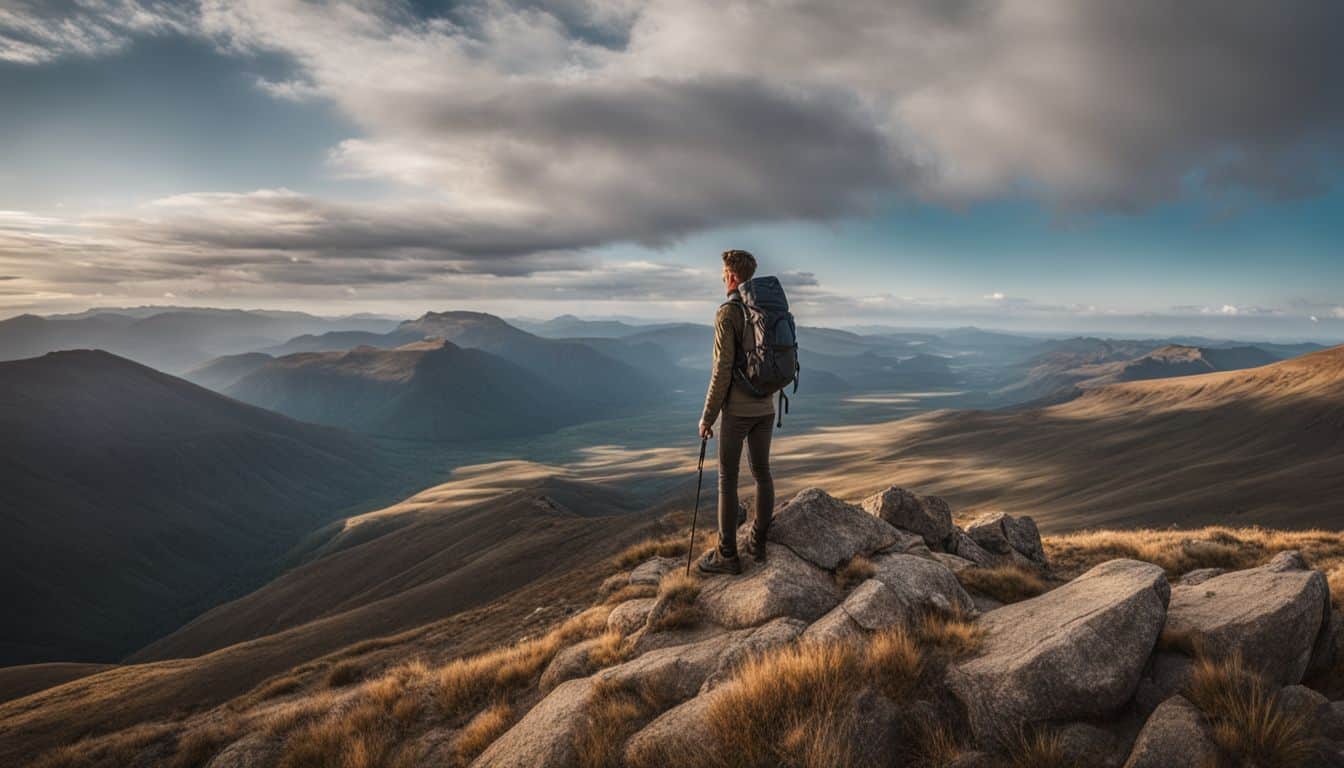
Tips for Hiking Mastery
Plan and prepare properly, dress appropriately, follow Leave No Trace principles, stay hydrated and fuel your body, know your limits, and hike within your skill level. Discover more valuable tips to enhance your hiking experience in national parks and local trails!
Plan and prepare properly
Before heading out on a hike, it’s crucial to plan and prepare properly. Assess your abilities and those of your group to choose a trail that suits everyone’s skill level. Leave a trip plan with someone you trust, including details of your intended route, so they know where to find you if needed.
Pack essential items like food, water, extra clothing, navigation tools (like a map or GPS device), and first aid supplies. Be aware of national park regulations and any environmental considerations specific to the area you’ll be hiking in.
By planning ahead and being prepared, you can have an enjoyable and safe hiking experience.
Dress appropriately and pack essential items
To have a successful hiking experience, it’s important to dress appropriately and pack essential items. This means wearing appropriate footwear like hiking shoes or boots to protect your feet and provide good traction on the trails.
Don’t forget to wear sun-protection clothing, sunglasses, and sunscreen to avoid getting burnt or having snow blindness in snowy areas. It’s also recommended for beginners to avoid wearing regular clothes like jeans, as they can become heavy and uncomfortable when sweaty or wet.
Carrying a backpack with necessary equipment, food, and water is crucial for a comfortable hike. Lastly, be sure to pack a physical map and compass to stay on track and navigate the trails effectively.
Follow Leave No Trace principles
As a hiking enthusiast, it’s important to follow the Leave No Trace principles when exploring both national parks and local trails. These guidelines help us minimize our impact on the environment and preserve the natural beauty of these areas.
Some key principles include planning ahead, disposing waste properly, respecting wildlife, and being considerate of other visitors. By following these principles, we can ensure that future generations can also enjoy the wonders of nature while minimizing our environmental footprint.
Let’s do our part in practicing responsible hiking and preserving our outdoor spaces for years to come!
Stay hydrated and fuel your body
Proper hydration is crucial when you’re out hiking. It helps keep you comfortable and prevents dehydration, which can make you feel tired and sluggish. To stay hydrated, it’s important to drink plenty of water before, during, and after your hike.
Aim for about a quarter of a gallon (1 liter) of water every hour while you’re on the trail. Don’t forget to bring a refillable water bottle or hydration pack with you! Also, remember to fuel your body with snacks that provide energy like graham crackers, energy bars, or bananas.
These simple carbs can give you the boost you need to keep going on your hike.
Know your limits and hike within your skill level
As a hiking enthusiast, it’s important to know your limits and hike within your skill level. National parks offer a variety of trails that cater to different hiking skills and capabilities.
Before embarking on a hike, make sure you understand the distance, elevation gain, and difficulty level of the trail. This will help ensure that you choose a hike that matches your abilities and fitness level.
Pushing yourself too hard can lead to exhaustion or injuries, so it’s better to start with easier trails if you’re a beginner. Remember, safety should always be your top priority when hiking!
Safety Considerations
Carry a map, compass, or GPS device to ensure you stay on track and avoid getting lost. Inform someone of your hiking plans for added safety. Be aware of weather conditions and potential hazards along the trail.
Stay on designated trails and follow park regulations to protect yourself and the environment. Read more to learn how to hike safely and responsibly in national parks and local trails!
Carry a map and compass or GPS device
As a hiking enthusiast, one important safety consideration is to always carry a map and compass or GPS device when exploring national parks. These tools are essential for navigation and orientation in the wilderness.
Knowing how to interpret a map and navigate with a compass is crucial for hikers, especially when landmarks are not visible due to bad weather conditions. Carrying a compass ensures that you can find your way through unfamiliar terrain confidently.
It’s wise to have gear like a compass that is foolproof and reliable, as it helps ensure accuracy in navigating your trail. Remember, having the ability to navigate with a map and compass is an essential survival skill for all hikers.
Inform someone of your hiking plans
It’s important to let someone know about your hiking plans, whether you’re exploring local trails or hiking in national parks. This is a key safety consideration that can help ensure your well-being during your outdoor adventure.
By notifying a responsible person of your intended route and expected return time, you provide them with important information in case something goes wrong. Hiking with another person is generally considered safer than hiking alone, so try to find a buddy or join a group whenever possible.
Remember, sharing your plans helps keep you safe and provides support in case of emergencies.
Be aware of weather conditions and potential hazards
As a hiking enthusiast, it’s important to always pay attention to the weather conditions and potential hazards before heading out on a hike. Ignoring weather forecasts or relying on inaccurate information can lead to trouble while hiking.
Fast rising streams can become unsafe to cross after moderate to heavy rains, so it’s essential to be mindful of recent weather patterns. Additionally, keep in mind that the weather on mountains can be drastically different from lower elevations, so be aware of these variations when planning your hike.
Extreme heat at national parks can also pose dangers, leading to heat-related illnesses for both visitors and rescuers. Taking safety precautions and assessing the risks involved with outdoor activities is crucial for a successful and enjoyable hiking experience.
Stay on designated trails and follow park regulations
Staying on designated trails and following park regulations is really important for your safety when you’re hiking in national parks. The U.S. National Park Service wants us to stick to the marked trails and paths, so we don’t get lost or hurt ourselves.
They also say it’s essential to keep a safe distance from other hikers, especially now with social distancing guidelines in place. When we hike in national parks, we need to be mindful of these rules and make sure we follow them.
In Grand Canyon National Park, they even have signs telling us to stay on the designated trails and walkways because it’s really dangerous to go off-trail there. So let’s remember: staying on the trails and following park regulations can help us have a fun and safe hiking experience!
Etiquette on the Trails
When hiking, it is important to practice proper trail etiquette by yielding to other hikers and trail users, respecting wildlife and their habitats, properly disposing of trash and waste, and leaving the trail as you found it.
Yielding to other hikers and trail users
When hiking on trails, it’s important to be considerate of other hikers and trail users. One basic rule is that bikers should yield to hikers and horses, and everyone should yield to horses.
This means that if you’re biking or using a motorized vehicle, you should let others pass first. It’s also good etiquette for hikers to yield to trail runners since they have a different rhythm.
When hiking in a group, make sure to hike single-file so that you don’t take up too much space on the trail. And remember, mountain bikers should always yield to both hikers and equestrians whenever possible.
Respecting wildlife and their habitats
As a hiking enthusiast, it’s important to respect wildlife and their habitats when out on the trails. Observing wildlife from a distance is crucial, as approaching or following them can disrupt their natural behavior.
It’s also essential to avoid feeding wildlife, as this can harm their health and alter their interactions with other animals. By practicing these habits, we can contribute to wildlife conservation efforts and help preserve the delicate balance of our ecosystems.
Let’s be responsible hikers and stewards of the environment by respecting and protecting the wildlife we encounter on our journeys.
Properly disposing of trash and waste
One of the most important things to remember while hiking is to properly dispose of your trash and waste. It’s essential for maintaining a clean environment and preserving the natural beauty of the trails.
Always follow the “Leave No Trace” principle by packing out all your trash, whether you’re hiking in a national park or on a local trail. Inspect your campsite and rest areas for any garbage or spilled food, making sure to pick it up and dispose of it properly.
Take your rubbish back with you until you find an appropriate waste disposal point, avoiding littering along the way.
Leaving the trail as you found it
One important aspect of hiking etiquette is leaving the trail as you found it. It’s all about preserving the natural beauty and ensuring that future hikers can enjoy the same experience.
By staying on designated trails and avoiding trampling on fragile vegetation, you’re helping to protect the ecosystem and maintain the integrity of the trail. Properly disposing of trash and waste is also crucial in keeping the trail clean and free from pollution.
Remember, we have a responsibility as hikers to be stewards of the environment and practice sustainable hiking practices. Let’s preserve nature’s beauty for ourselves and future generations to come!
The Joy of Exploring Local Trails
Exploring local trails brings the joy of discovering hidden gems in our own backyard, building a deeper connection with our local environment, and supporting local conservation efforts.
Discovering hidden gems in your own backyard
As a hiking enthusiast, there’s nothing quite like discovering hidden gems in your own backyard. These overlooked trails and parks in your community hold a special kind of beauty and charm.
Whether it’s a local park tucked away in the suburbs or a trail winding through nearby forests, exploring these hidden treasures allows you to connect with nature on a deeper level.
Not only do you get to experience the thrill of uncovering new paths, but you also support local conservation efforts and build a stronger bond with your local environment. So grab your gear and start traversing those local hiking trails, because adventure awaits right outside your door!
Building a deeper connection with your local environment
As a hiking enthusiast, I’ve discovered the joy of building a deeper connection with my local environment through exploring nearby trails. By hiking locally, I have the opportunity to immerse myself in the natural beauty of my own backyard and discover hidden gems that often go unnoticed.
It’s not just about getting exercise and fresh air; it’s about developing an appreciation for the unique ecosystems and wildlife that exist right in my community. Plus, by supporting local conservation efforts, I can actively contribute to preserving these precious landscapes for future generations to enjoy.
So lace up your boots and start exploring your neighborhood parks – you’ll be amazed at what you’ll find!
Supporting local conservation efforts
I believe that supporting local conservation efforts is essential when it comes to hiking. By exploring and appreciating local trails, you are not only enjoying nature but also contributing to its preservation.
Many public parks collaborate with nonprofit organizations and state-run agencies to maintain the trails and protect wildlife habitats. Their hard work ensures safe hiking experiences while also safeguarding the natural resources we all cherish.
When we hike locally, we support these conservation initiatives, allowing future generations to enjoy the beauty of our local environment just like we do now.
The Unique Experience of Hiking in National Parks
Exploring national parks offers a chance to witness iconic landmarks and natural wonders, immerse oneself in diverse ecosystems, and learn about the rich history and culture of these protected areas.
Visiting iconic landmarks and natural wonders
As a hiking enthusiast, I absolutely love visiting iconic landmarks and natural wonders. There’s something truly awe-inspiring about standing in front of these breathtaking landscapes and taking in the natural beauty around you.
Whether it’s exploring the majestic peaks of the Rocky Mountains or witnessing the stunning vistas at Yosemite National Park, these experiences offer a unique opportunity to immerse yourself in untouched wilderness and witness wildlife sightings firsthand.
Not only do national parks provide outdoor adventures, but they also allow you to learn about the history and culture of each park. For example, places like the Grand Canyon are not only known for their scenic trails but are also significant natural wonders that attract millions of visitors each year.
Immersing yourself in diverse ecosystems
When hiking in national parks, one of the greatest joys is immersing myself in diverse ecosystems. It’s incredible to experience the beauty and variety of different landscapes, from towering mountains to lush forests and serene lakes.
Each ecosystem has its own unique flora and fauna, offering a chance to witness the wonders of nature up close. Whether it’s spotting rare birds, observing colorful wildflowers, or encountering elusive wildlife, every step on these trails brings me closer to the natural world around me.
The opportunity to explore such diverse ecosystems is truly a privilege that I cherish as a hiker.
Learning about the history and culture of the park
When hiking in national parks, I find it fascinating to learn about the history and culture of the park. National parks often have interpretive programs, educational resources, and visitor centers that provide information about the park’s heritage and cultural significance.
You can discover interesting facts about indigenous history, explore archaeological sites, and visit historical landmarks within the park. Guided tours are also available to help you delve deeper into the rich history of these special places.
It’s a unique opportunity to not only enjoy nature but also immerse yourself in the stories that make each national park truly special.
Conclusion on Hiking In National Parks Vs Local Trails
When it comes to hiking, both national parks and local trails offer unique experiences. By mastering these 9 tips, you can make the most of your outdoor adventures. Whether you choose to explore nearby landscapes or visit iconic landmarks, remember to plan ahead, stay safe, and respect nature.
Happy hiking!
FAQs on Hiking In National Parks Vs Local Trails
1. Are there any differences between hiking in national parks and local trails?
Yes, there are some differences between hiking in national parks and local trails. National parks often have more regulations, require permits for certain areas, and offer a wider variety of landscapes and wildlife.
2. What are some tips for mastering hiking in national parks?
Some tips for mastering hiking in national parks include researching trail conditions beforehand, packing essential gear like water and snacks, staying on designated paths to protect the environment, and following park rules and guidelines.
3. Can I hike on local trails without any special equipment or preparations?
While you can hike on local trails without extensive preparations or special equipment, it is still important to wear appropriate footwear, carry water, and be aware of your surroundings for safety purposes.
4. How can I navigate through unfamiliar trails in national parks?
To navigate through unfamiliar trails in national parks, you can use maps provided at visitor centers or download offline maps on your smartphone before starting the hike. It’s also helpful to follow trail markers or signs along the way.
5. Are there any dangers involved in hiking both in national parks and local trails?
Yes, there are potential dangers when hiking both in national parks and local trails. These may include exposure to extreme weather conditions, encountering wild animals or poisonous plants, getting lost if not properly prepared with navigation tools like a compass or GPS device

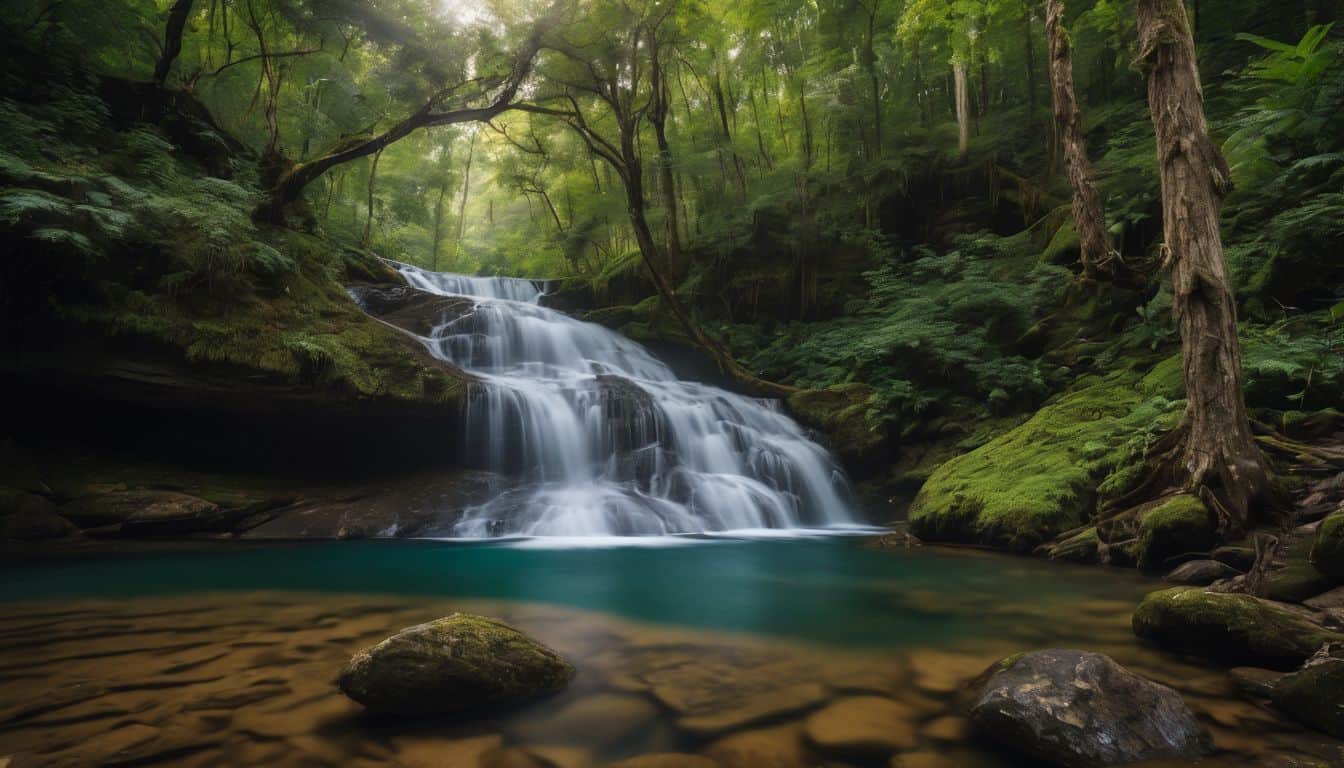
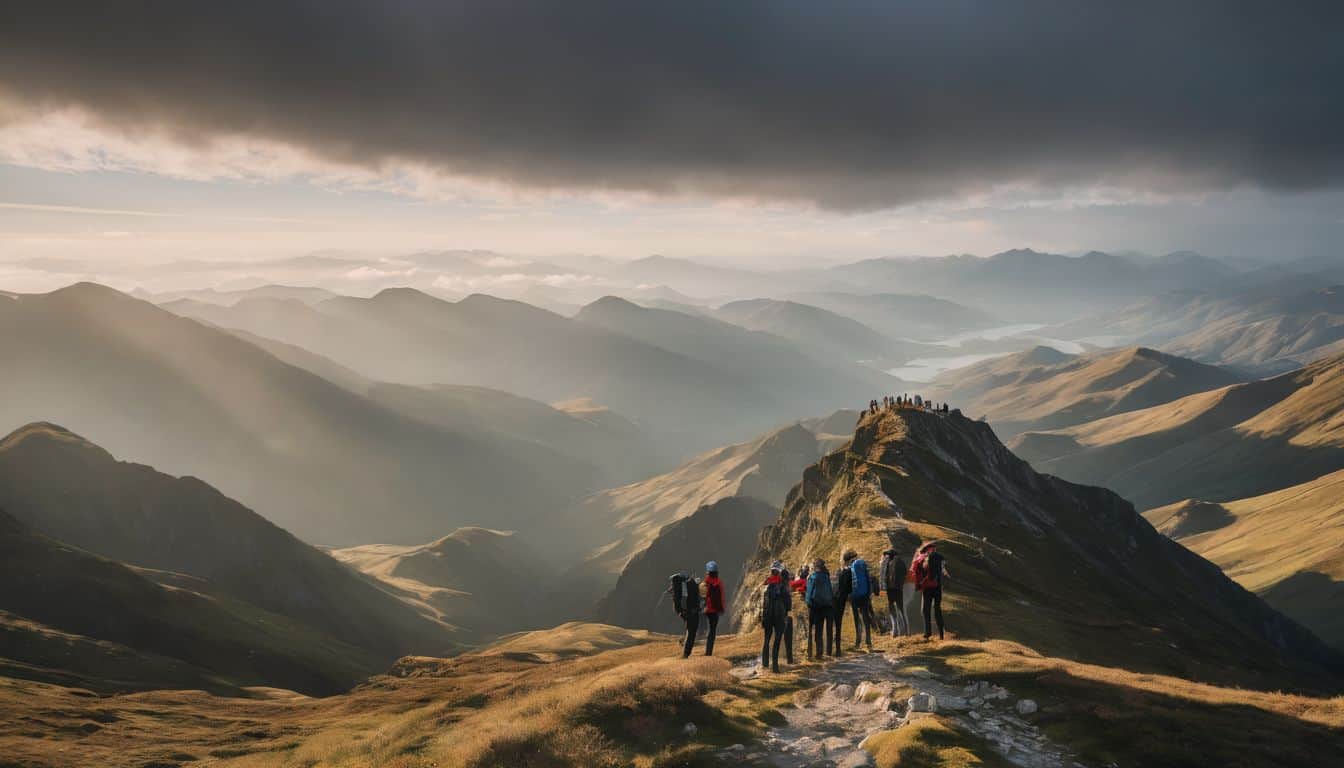
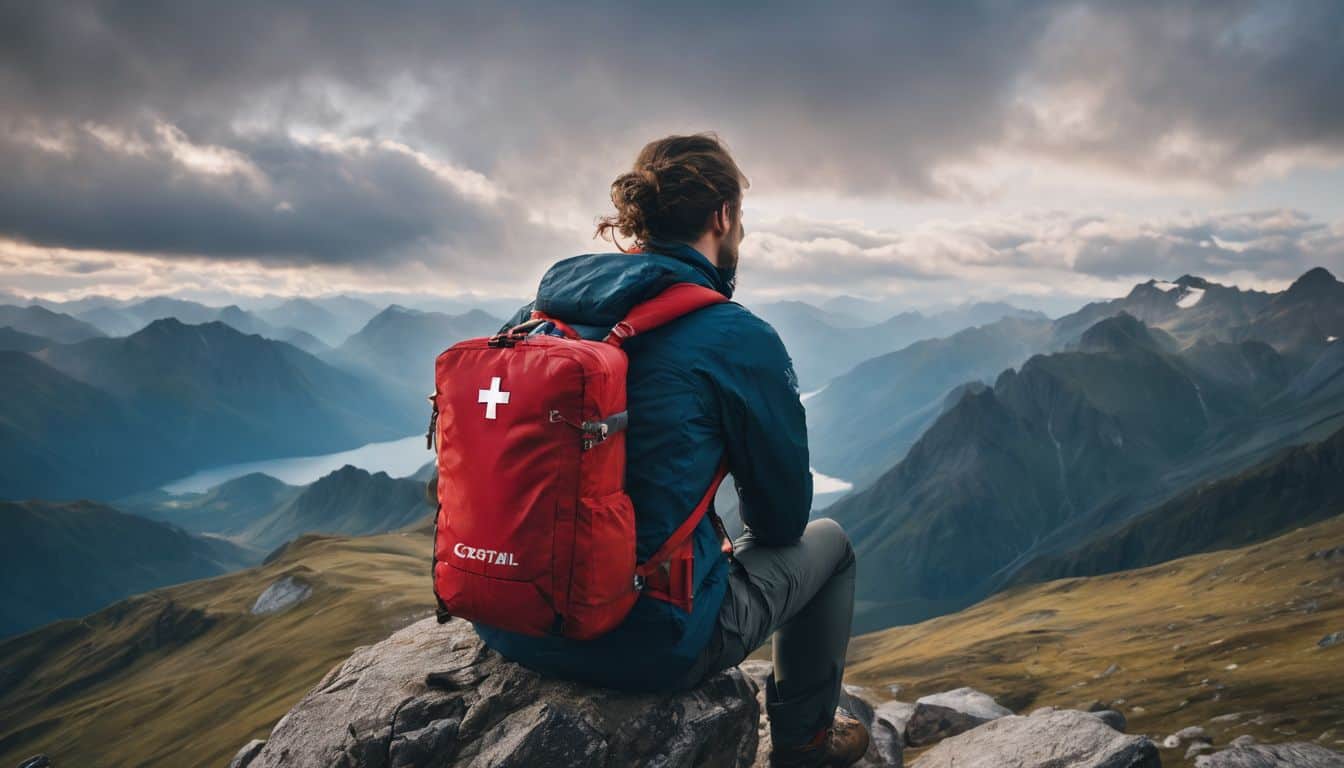
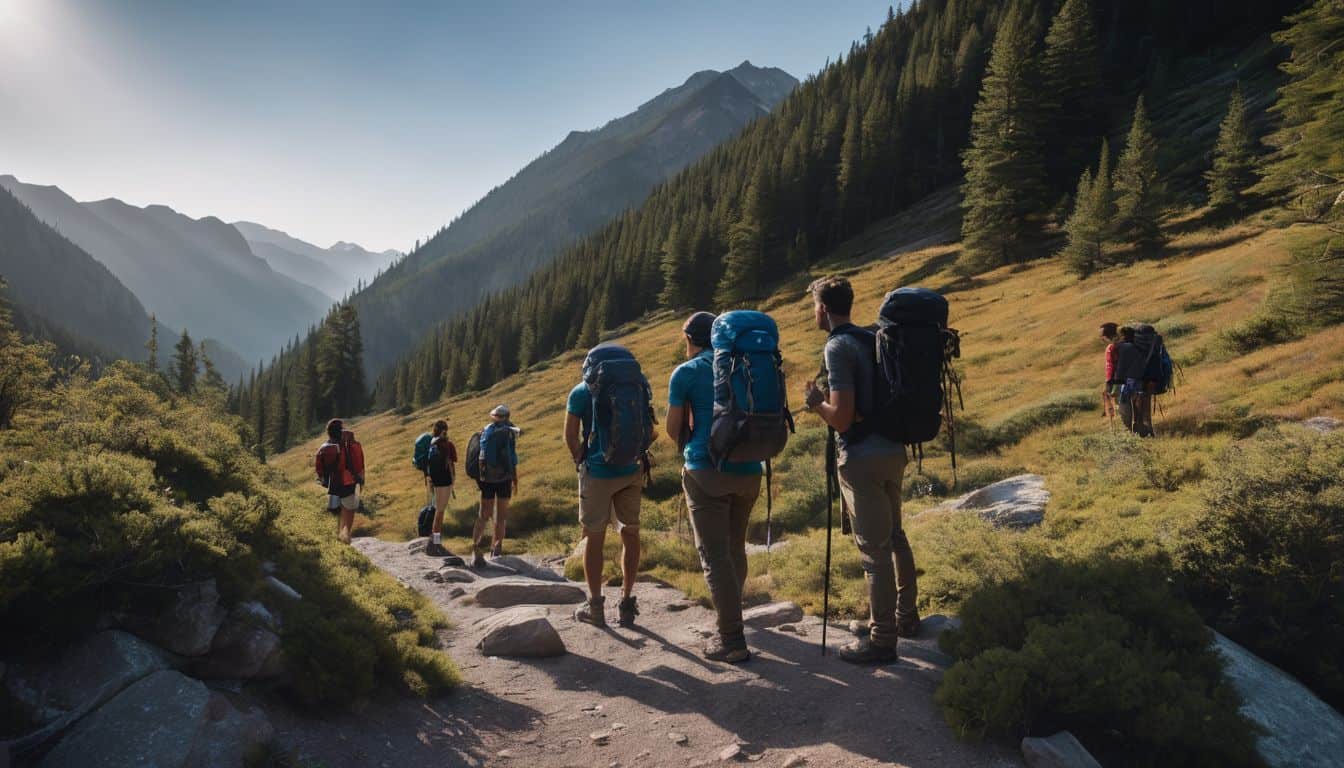
Leave a Reply